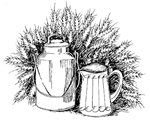
WHY YOU NEED TO EXERCISE
The cells of our body contain millions of little energy producing factories called mitochondria. These mitochondria are lung like organelles that mix oxygen with nutrients to provide the energy we need for human activity. At moderate rates of activity, a sufficient amount of energy can be generated from the utilization of glucose and oxygen so that an individual is constantly working in their aerobic training zone. Your aerobic training zone is the level at which you can work and exercise without the accumulation of lactic acid in the muscles. Lactic acid accumulation is what gives you that burning sensation in the muscles during intense exercise.
Lactic acid buildup is what normally occurs in the muscles as a result of there not being enough oxygen supplied to the mitochondria of muscle cells. Therefore, the most important reason for exercise is to increase the oxygen utilization capacity of the body and therefore reduce the rate at which lactic acid accumulates.
Aerobic exercise, (exercise that allows for the uptake of more oxygen than when resting), will multiply the number of mitochondria in the cells one to two times over that of an unfit person. The size of the mitochondria can increase up to 40% and the enzymes that are involved in energy production can be increased anywhere from ten to one-hundred percent.
Aerobic exercise provides for a greater oxygen supply to the tissues of the body and therefore allows for a more efficient burning of fuel. This results in a more complete breakdown of sugars and fats. Better fuel efficiency will result in more energy and less fatigue. This is the primary purpose for maintaining a consistent exercise program.
While exercise will not burn a lot of fat calories during the time you are exercising, such exercise will raise your basic metabolic rate and keep it elevated for hours after you have finished exercising. The result is an increase in the rate at which calories are burned over a period of hours after you completed your exercise. This can help to reduce weight through more efficient metabolism. For example, walking one hour per day with no increase in daily calorie intake could result in the loss of thirty pounds in one year.
Exercise will increase the rate at which fat is burned while at the same time increasing the synthesis of protein and therefore limiting the loss of muscle mass while on a low calorie diet to lose weight. Exercise will also increase the burning of brown fat which is felt to be a primary factor in weight management. Brown fat is a metabolically active fat that is found close to the skeleton and is responsible for the production of body heat. Overweight individuals are often found to poorly utilize brown fat.
Additional benefits of regular aerobic exercise includes a decrease in the resting pulse rate and blood pressure, an increase in hemoglobin and therefore better oxygen carrying capacity of the blood, increase in HDL cholesterol, (the good guys), and a decrease in LDL cholesterol, (the bad guys), and an increase in the number of capillaries carrying blood throughout the body.
One method of determining your aerobic training zone is to subtract your age from 180 which will give you the maximum number of heart beats per minute that is allowable for the average “unfit” person of a particular age. An ideal exercise program would require maintaining at least 70% of your maximum allowable heart rate for 20 minutes, three to four times per week. As your fitness level increases, your allowable maximum heart rate can be re-figured on the basis of 220 minus your age.
Common aerobic exercise includes walking, running, swimming and biking. Resistive exercise should also be included in your exercise program as this form of exercise will do a lot to strengthen muscle and connective tissue such as tendons and ligaments. Such resistive exercise can include everything from push-ups, chin-ups and working out with free weights or weight machines to using stretching equipment, such as xertubes. Using a rebounder will provide both aerobic and muscular exercise at the same time when small hand weights are used while rebounding.
Both aerobic and resistive exercise will enhance bone strength by facilitating calcium utilization. Exercise has also been shown to increase T lymphocyte activity in the body and therefore enhance immune response. Much research has demonstrated the relationship between exercise and stress reduction. Exercise has been shown to affect neurological function by stimulating the production of certain brain chemicals such as endorphins which elevate mood.
In summary, exercise is vital to the health and well being of both body and mind. Our bodies were designed to be active. Even short periods of inactivity result in atrophy of muscle tissue. Strength of both body and brain tissue is directly related to consistent exercise. It is the blood that carries nutrients to all parts of the body. Exercise is an important dynamic in facilitating good blood flow throughout the vascular system. Good blood flow results in a better nutrient feed to the various tissue systems of the body.
RETURN TO ARTICLES NAVIGATION